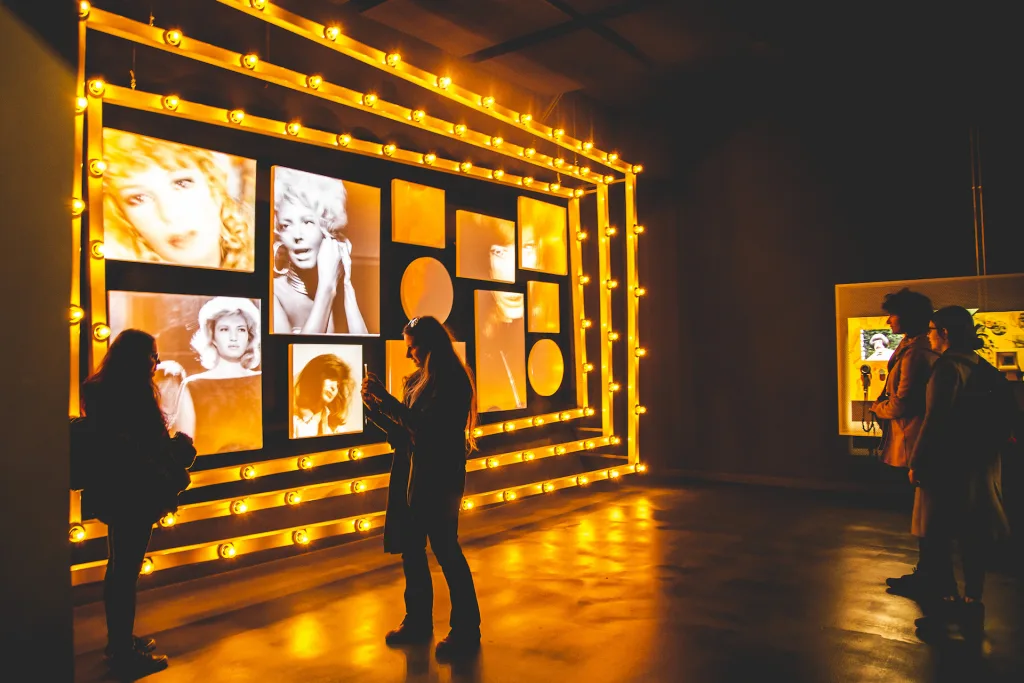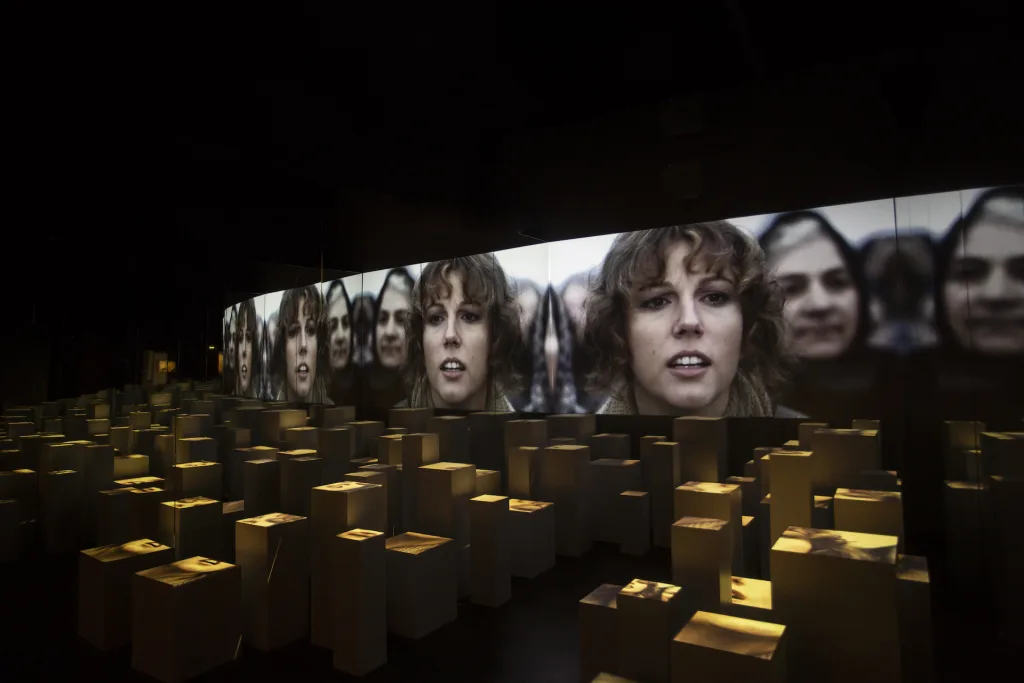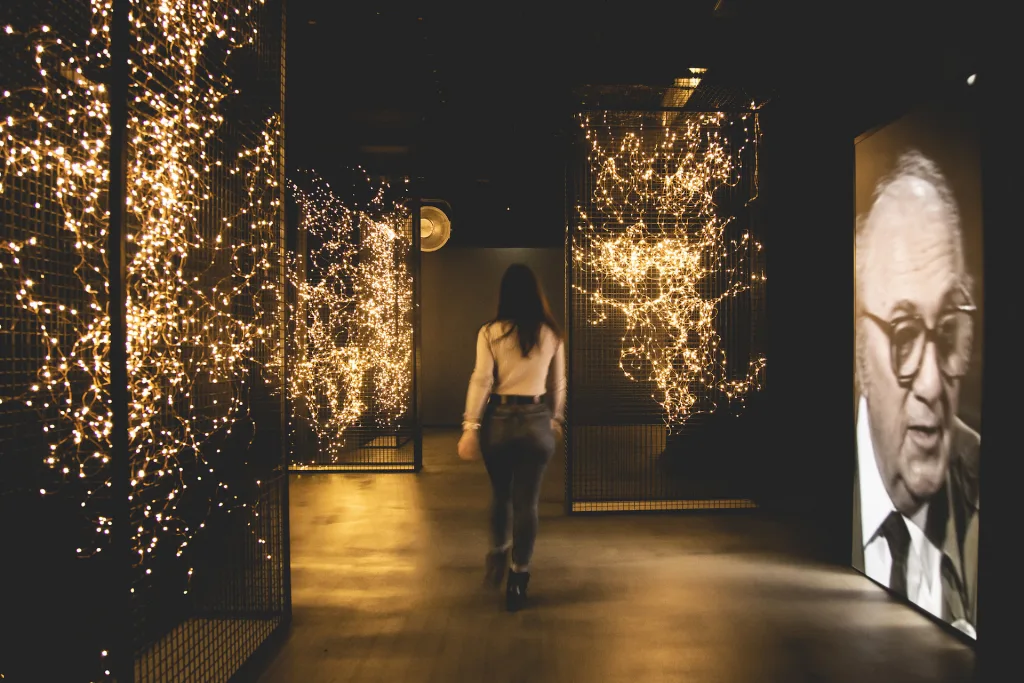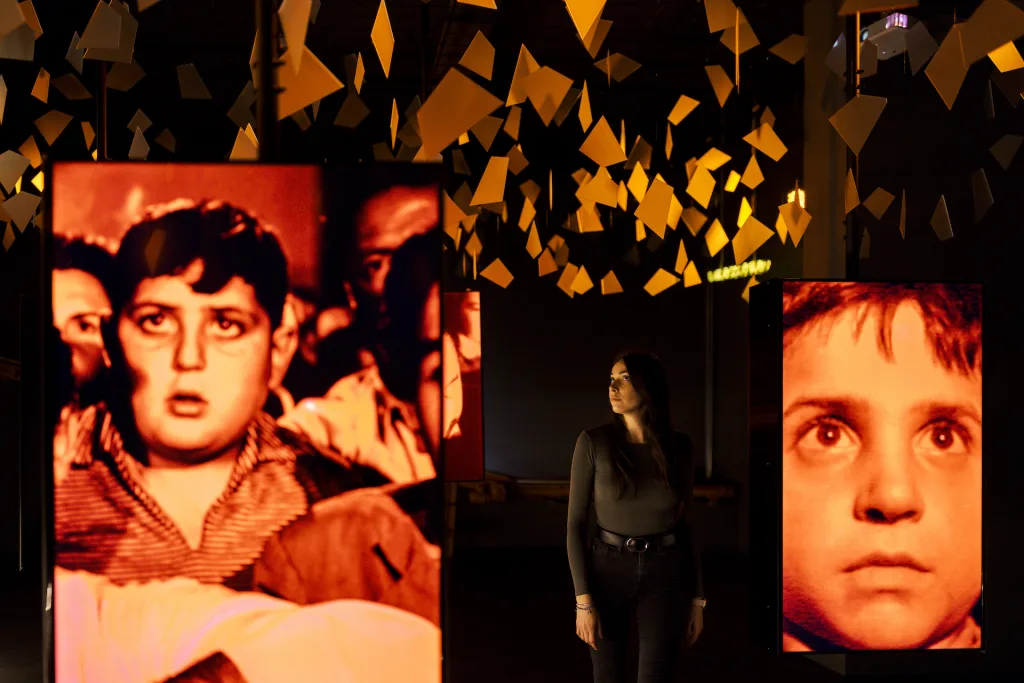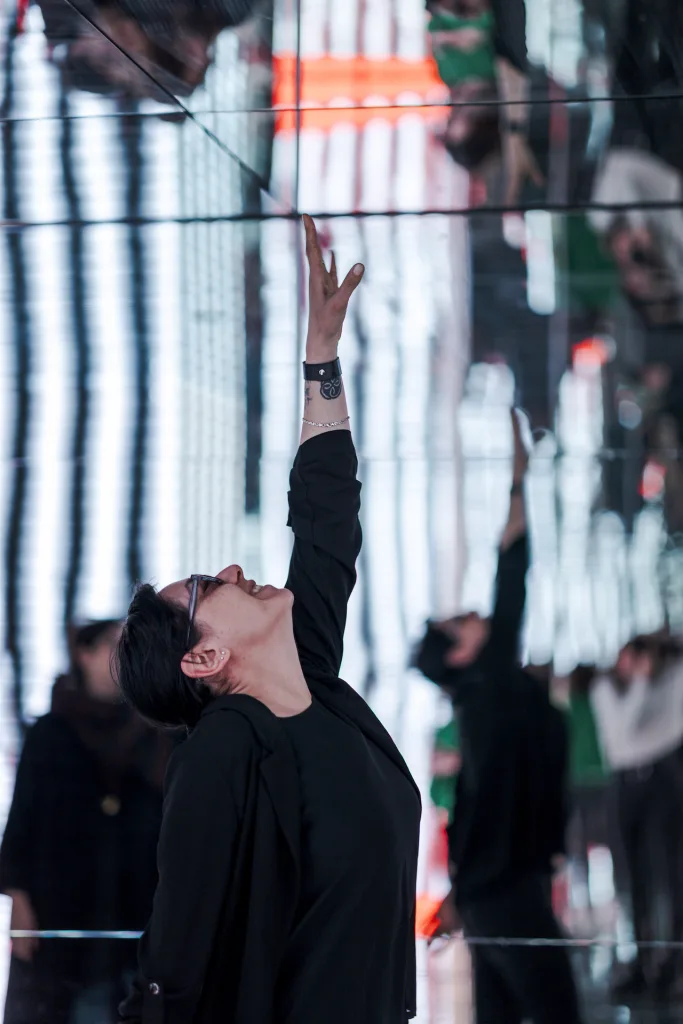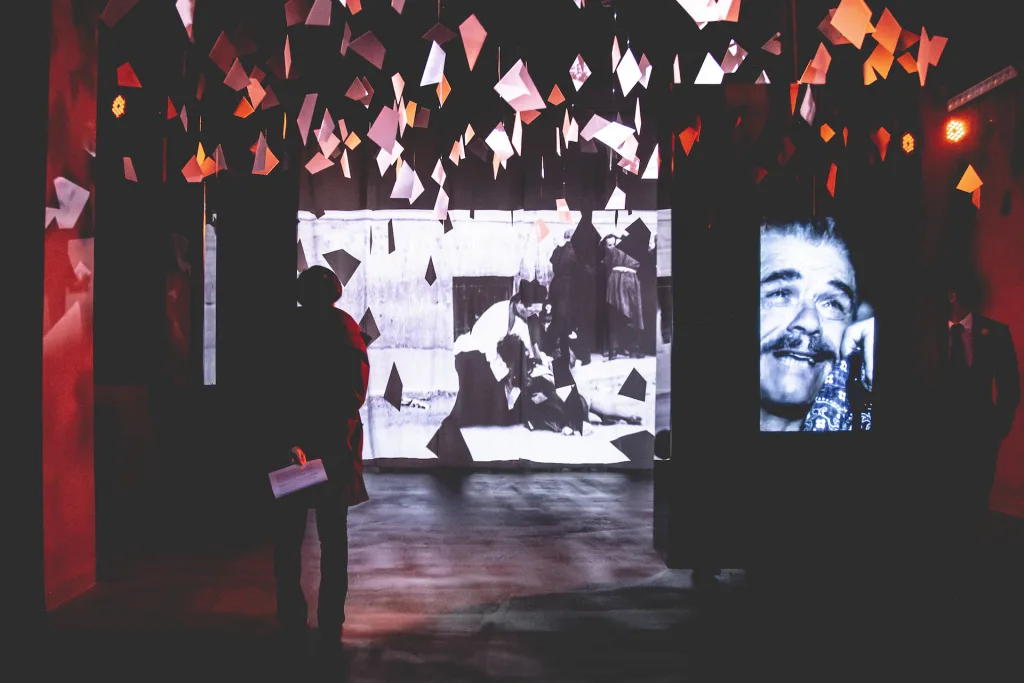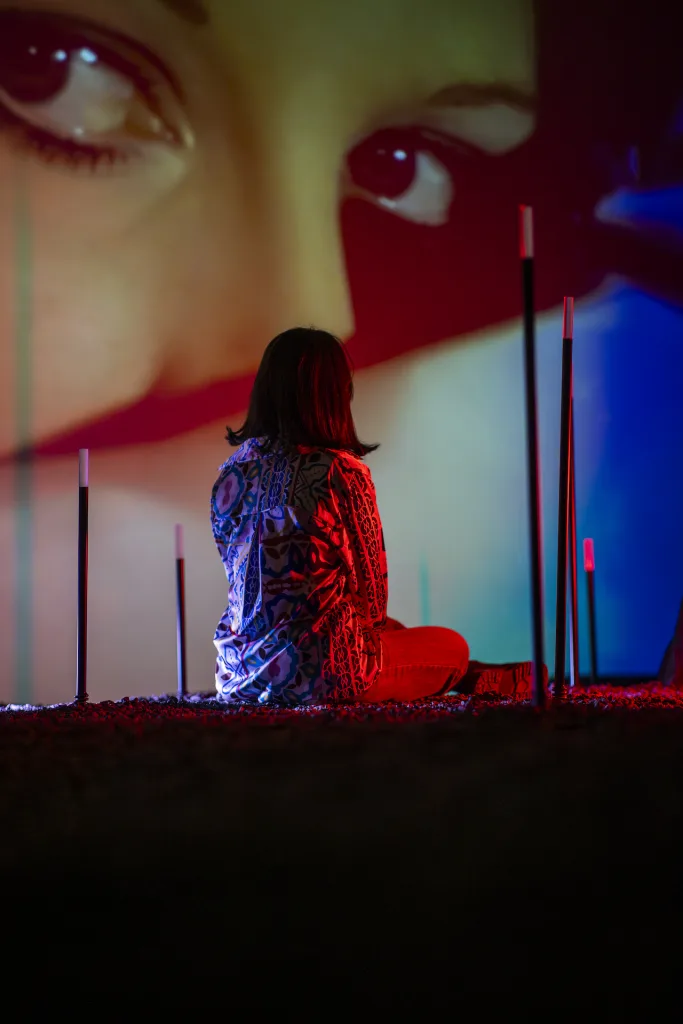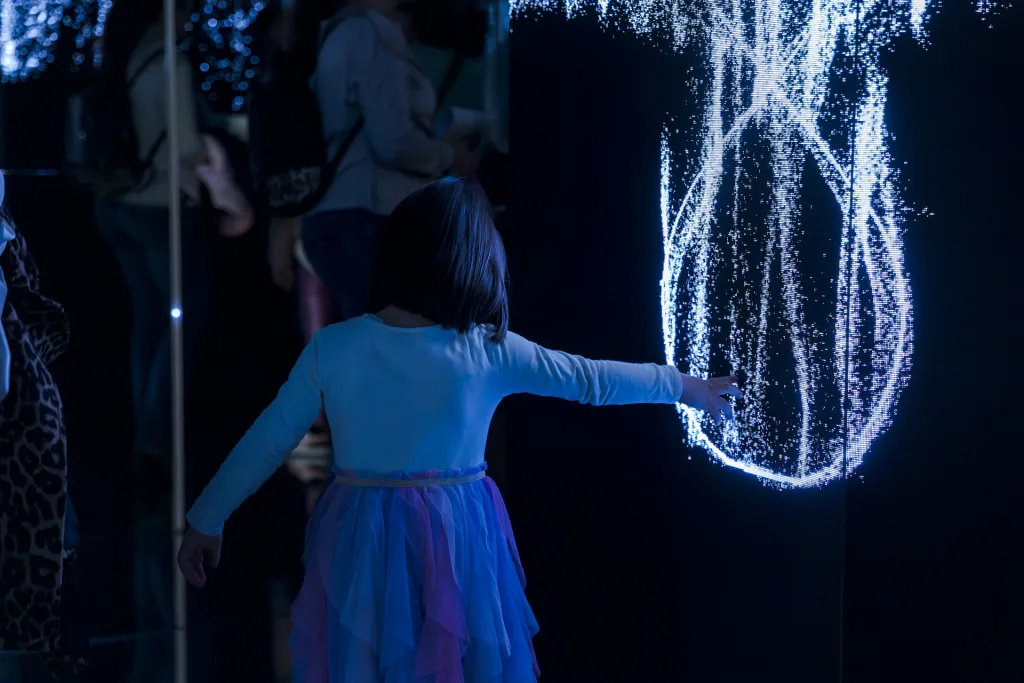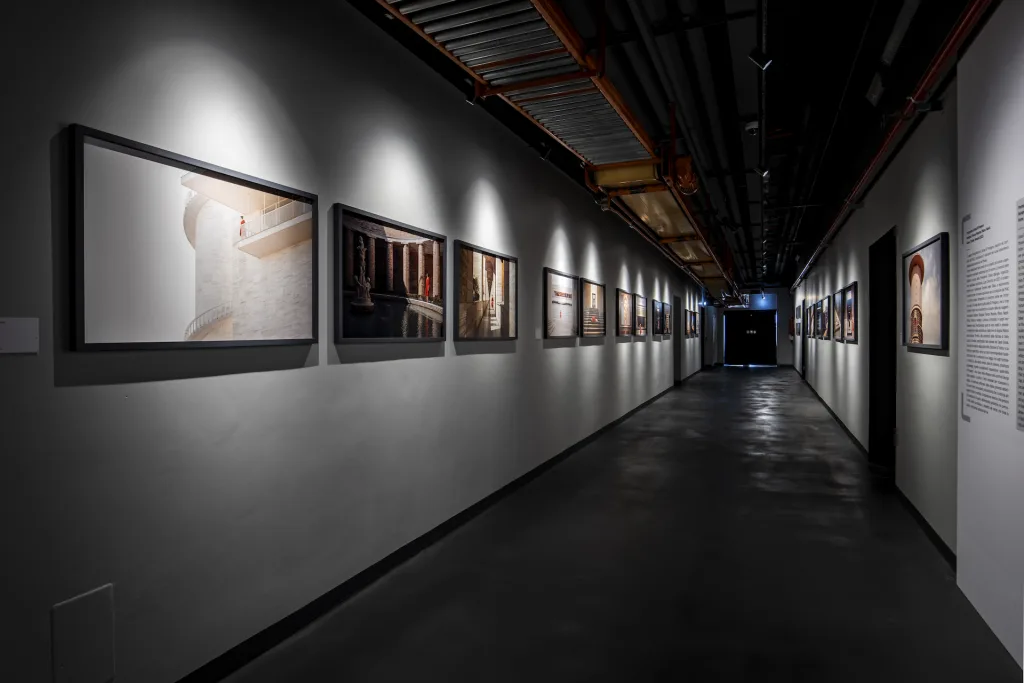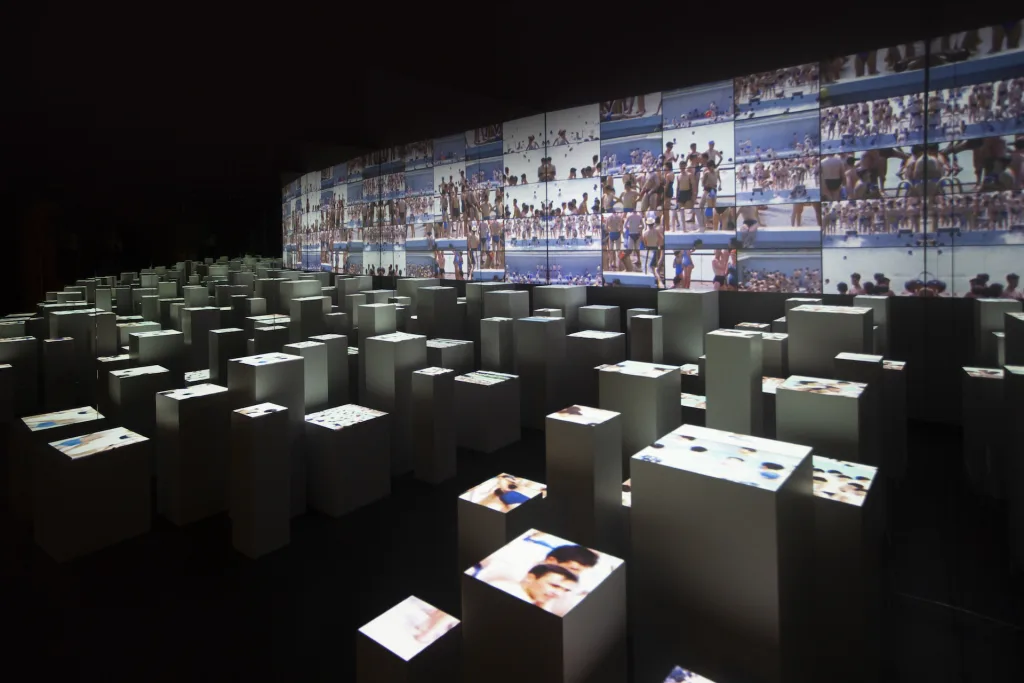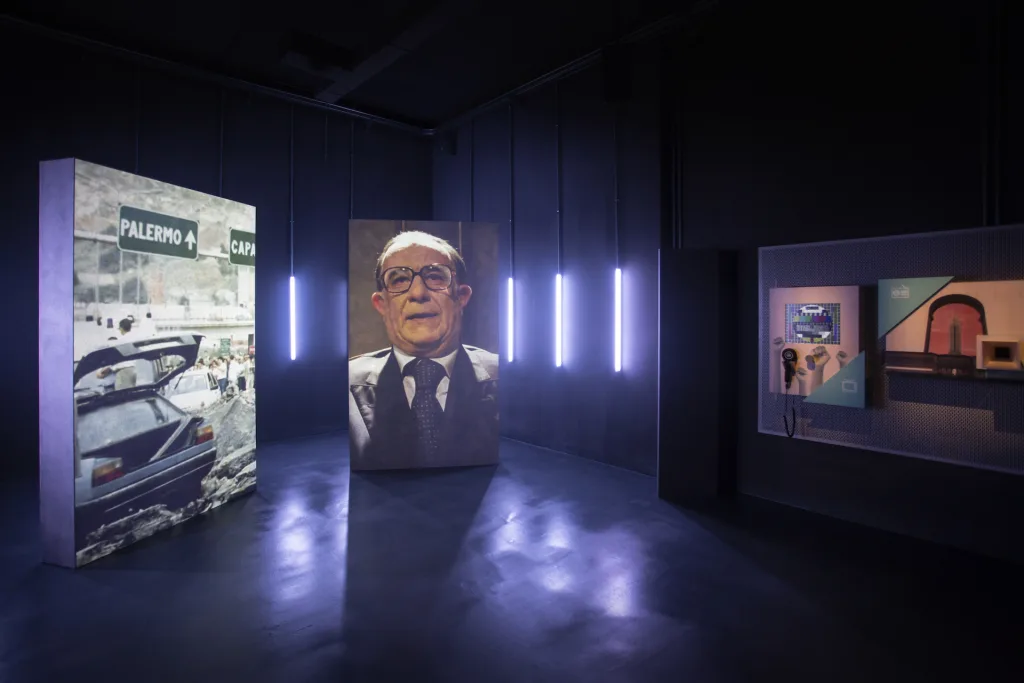MIAC – Italian Museum of Moving Images is a multimedia museum whose immersive experiences, interactive installations and thematic insights into art and cinema offer a unique opportunity to learn about Italy’s vast audiovisual heritage. Inaugurated in 2019, the museum occupies the buildings originally used for the Development and Print Laboratory, Mechanical Workshop and Film Storage.
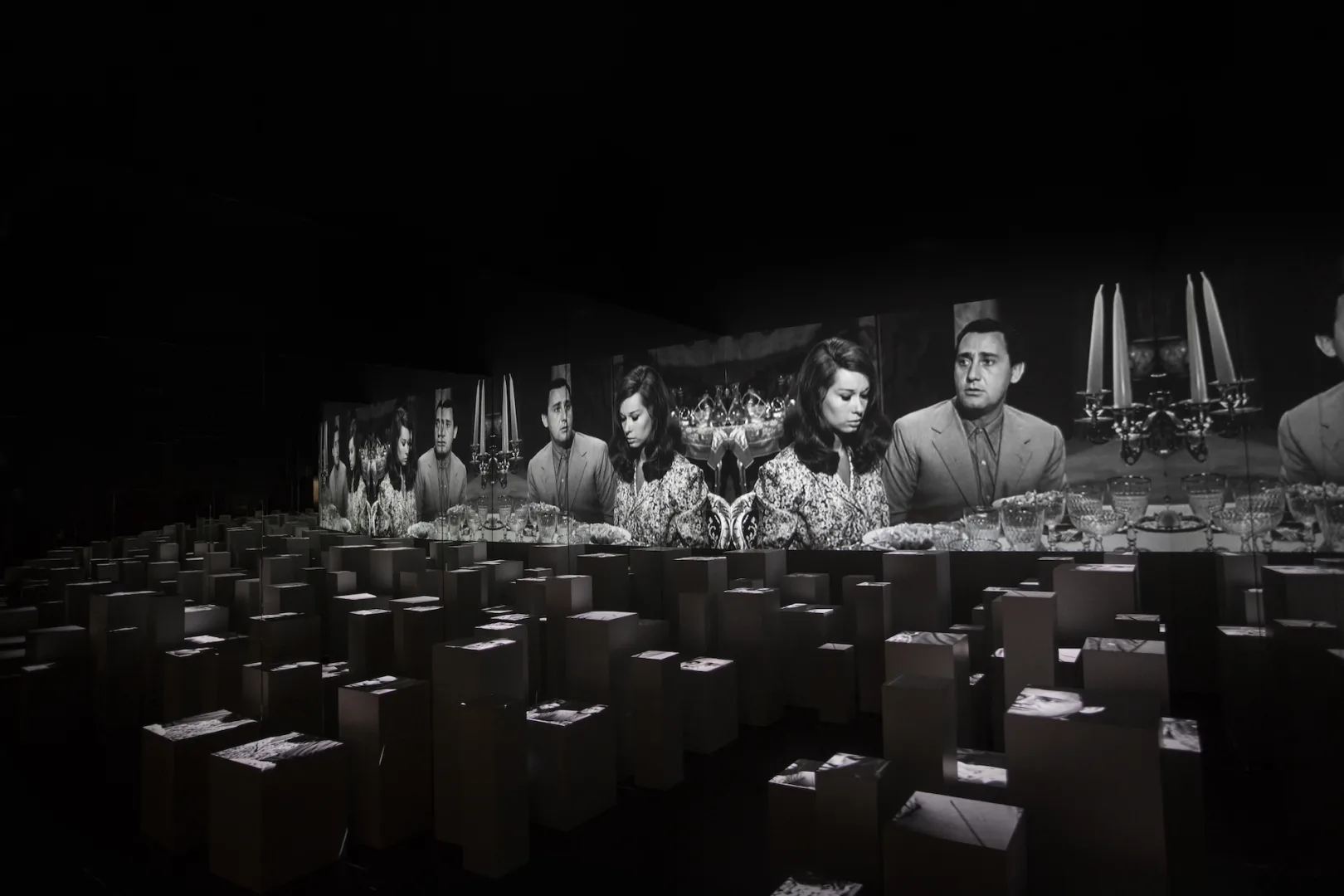
Route and rooms
MIAC extends over an area of 1650 sqm. Each room explores a theme using visual and audio materials accompanied by text, with an interactive installation designed to deepen the meaning of the chosen theme for the visitor. The route includes the display of the new acquisitions that constitute the core of the MIAC permanent collection, which is currently being expanded.
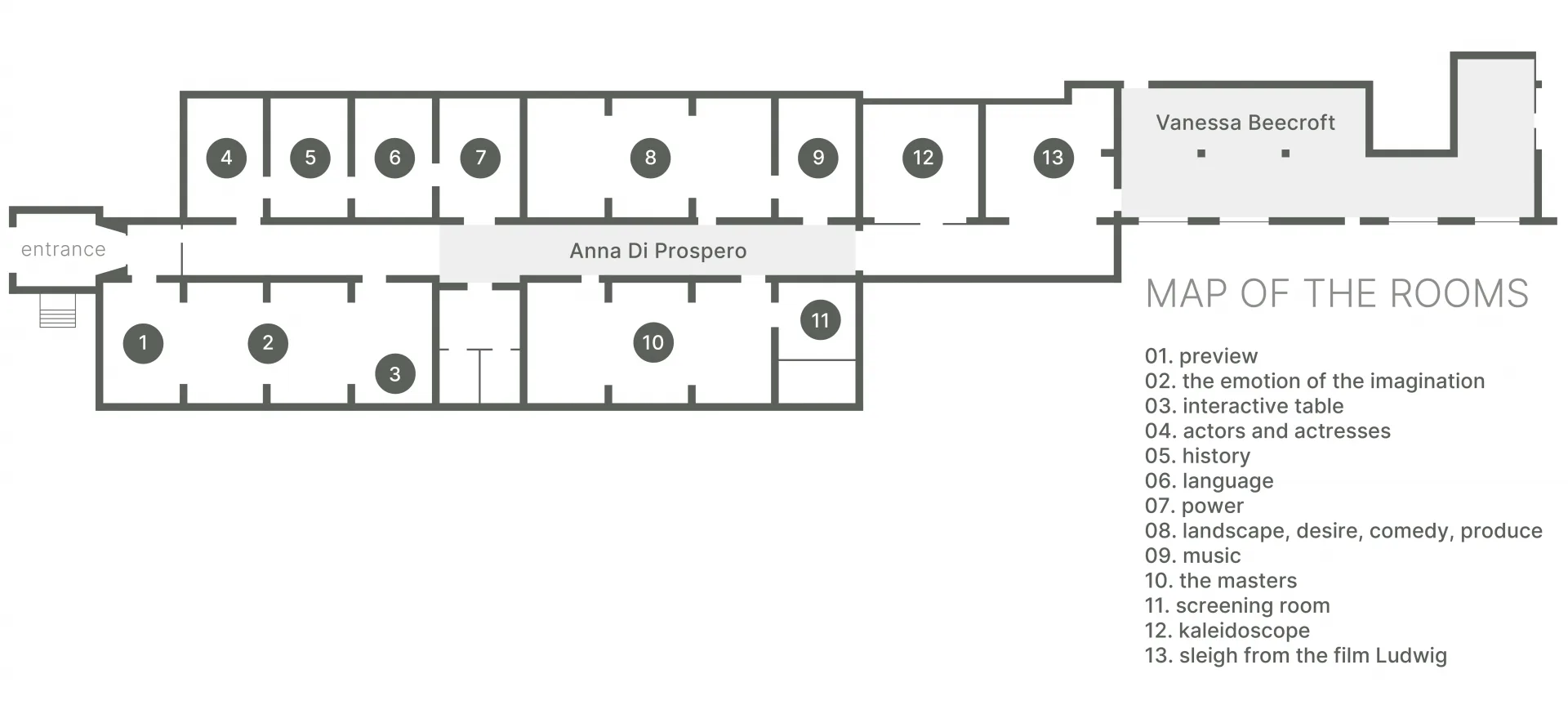
Preview
A waiting area, a foyer, where the signs from famous cinema theatres jostle with familiar sounds and jingles.
The emotion of the imagination
Viewers’ faces and dozens of mirrored fragments are projected onto screens to replicate memorable scenes from Italian films. A demonstration of how films are the mirror where we discover our own emotions: fear, desire, adventure, dreams, hopes…
Actors and actresses
The actors and actresses room celebrates the prime representatives of a film or a show. A mosaic of sequences and close-ups returns them to us: legends and divas, stars for their admirers, prizes, festivals. Elusive icons who were in some cases used as aspirational examples followed by the Italians for their aesthetic or, even more frequently, emotional appeal. Three spectacular frames formed of 100 light bulbs enclose them in one single, bejewelled dressing room.
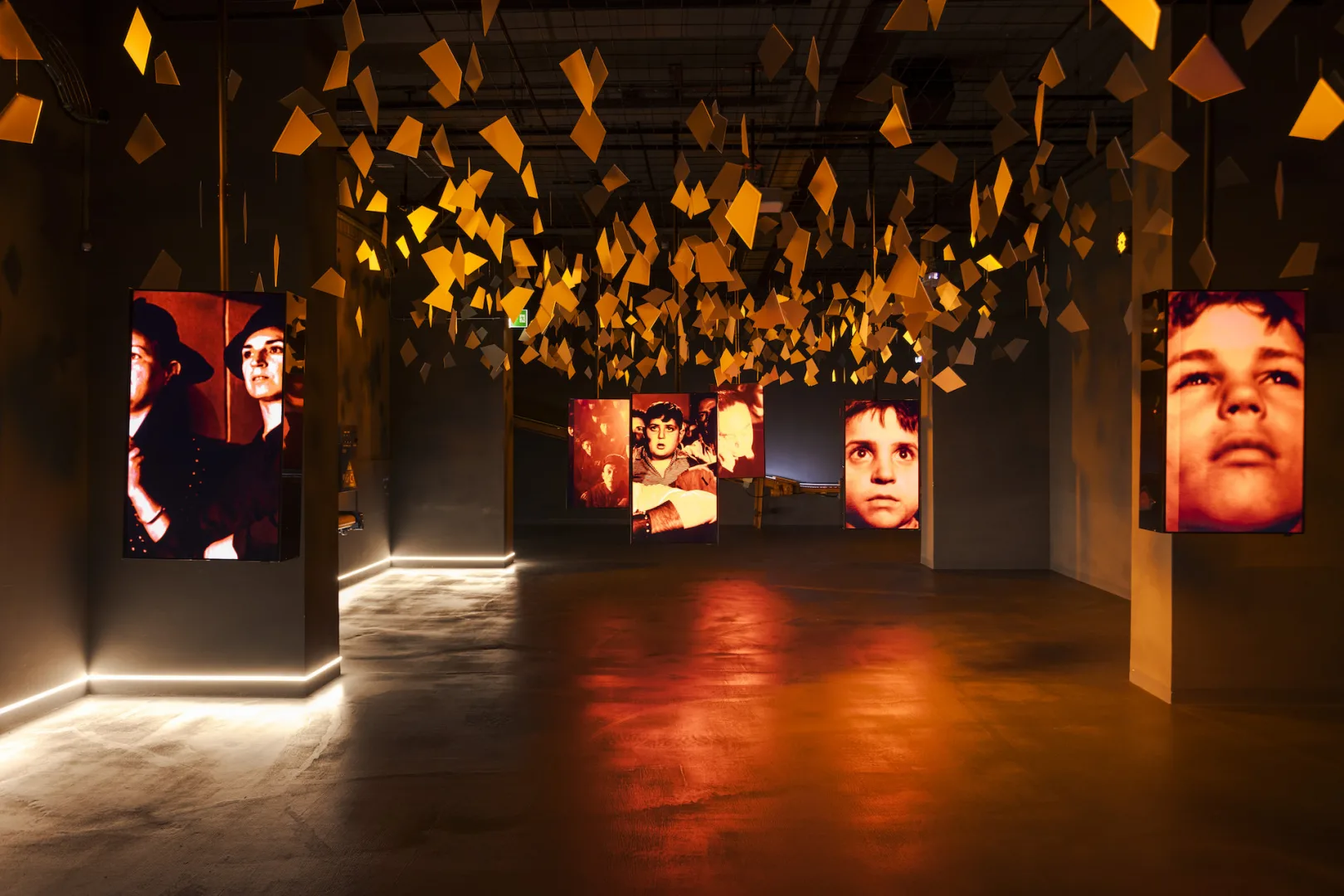
History
Cinema and TV have become an essential reference for studying and understanding our history. The screens in this room offer an account that is out of time, a powerful journey through the identity of the Italians – or the difficult struggle to create one.
Language
The audiovisual medium, as is well known, was a key element in the linguistic unification of Italy. However, there are also huge numbers of dramas based on the dialects and regional natures of a country that has been unified but never very united. The room resounds with sounds, words and overlapping dialogues in addition to the selected scenes showing on 3 vast lightboxes. The combination of audio and video restores the stunning richness of our cinema and our language.
Power
Two cement walls, both 2.5 m high, display archive material and films to show representations of power experienced by Italians over time. Unforgettable faces and memorable masterpieces. Power experienced as abuse or with resilient irony. Two names in particular represent this: Gian Maria Volonté and Totò.

Landscape, desire, comedy, produce
The enchantment of the Italian landscape: unmistakeable, abused, immortalized by cameras. The produce and the civilization of that landscape: our nutrition. The images of desire, veiled or explicit. And, then, a key genre in our cinema canon, so important it has a name of its own: la ‘commedia all’italiana’.
The four different themes are reproduced on four vast screens, all at the same time. In the midst, a spectacular landscape of the moon, the earth and luminous stele that reacts to the beats of the film clips. A surprising tactile and visual experience, the encouragement to look at things differently.
Music
The soundtrack of our lives. Music for film, musicals – in the country of melodrama and musicarelli – from the first film with sound, La canzone dell’amore (1930), to the brilliant Italian composers: Morricone, Rota, Trovajoli, Piovani… Luminous sheet music lights up with the tempo and tone of this irresistible sound montage.
The Masters
The names that take Italian cinema into the world: seen in action, backstage, during breaks and at memorable awards ceremonies. Alongside, are the other Masters – the professionals and craftspeople, the pillars of the industry who contribute their skill and brilliance to building the personal visions of creative minds. An architectural element of shining lights and metal mesh designs pillars and skyscapes in light.
Kaleidoscope
An entirely mirrored room offering no dimensional reference points, where luminous trails dialogue with a video column in the centre. A box of mirrors that creates infinite reflections. The future is how we see it.
Collection
The MIAC itinerary has been enriched with the collection’s new acquisitions: a cycle of twenty-one photographs by the artist Anna Di Prospero created for the Archivio Luce Cinecittà exhibition project La memoria delle Stazioni and eight photos and a video of performance VB93 by Vanessa Beecroft, created by the artist in Cinecittà’s famous Teatro 5 are displayed in the corridor. The works, entirely produced by Cinecittà, enter into a dialogue with cinema history and with the Studios in a perspective of the crossover and relationship of expressive languages.

